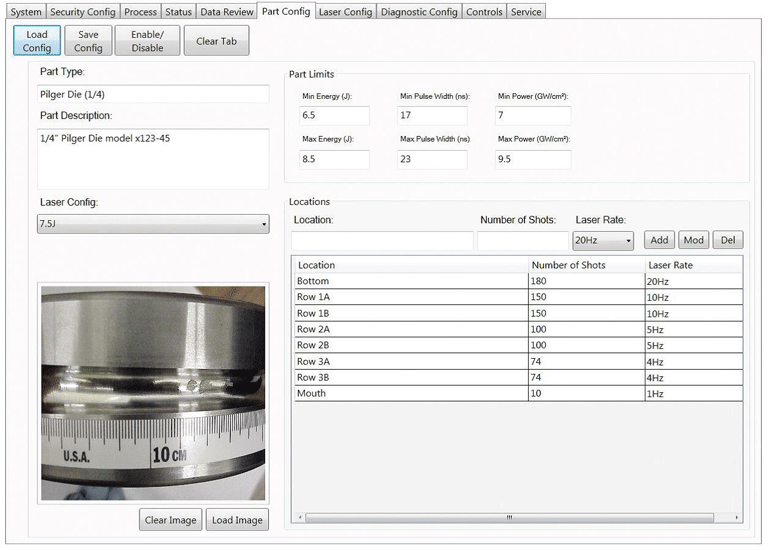‘Smart’ Machines Provide High Control to Fatigue Life Improvement Process
Laser peening, or laser shock peening (LSP), is inherently a smart process that improves fatigue strength and reduces stress corrosion cracking effects in metallic components.
Posted: November 21, 2016
By:
Computer-controlled shot peening is increasing the precision of this surface enhancement process, according to a recent article by Wheelabrator. This evolution in peening equipment allows for air pressure and shot flow – the two key process elements for shot peening – to be monitored and adjusted by computer-control. Shot peening imparts kinetic energy into a metal component through the targeted application of mass (as determined by shot flow) and velocity (as determined by air pressure), to improve the fatigue strength of the material and increase the fatigue life of the component. Improving control of these process variables through computer automation enhances the precision and repeatability of shot peening results. See the full Wheelabrator article for more information: Smart machines make Aerospace peening a precision art
Laser peening, or laser shock peening (LSP), is inherently a smart process that improves fatigue strength and reduces stress corrosion cracking effects in metallic components. With LSP, the three key process parameters of energy, pulse width, and spot area are computer-controlled and monitored to ensure precision application. Laser energy and pulse width data are collected for each laser pulse and monitored for process tolerance limits, while spot area is obtained optically by a camera and determined by a computer algorithm. The monitoring and computer-controlled assessment in this real-time process feedback makes laser peening the most precise and smart surface enhancement process available for improving fatigue life in metal parts.
Quality Control for Laser Peening
While shot peening relies upon the kinetic energy of the shot material to impart compressive residual stresses that improve fatigue life, laser peening relies on a computer-controlled, pulsed laser beam to generate residual stresses deeper than any other peening method. The depth of the compressive stresses imparted by laser peening dramatically increase the fatigue strength and fatigue life of metallic components, thereby improving reliability and increasing service lifetimes. The intensity of the stress wave and its resulting effect on the material is determined by the power density of the laser pulse. The gigawatt (GW) power densities used for laser peening metal improvement are typically in the 9 to 10 billion watt range per centimeter squared (GW/cm2). These power densities make laser peening the most powerful and effective surface enhancement peening process available.
While shot peening processes may be getting smarter through computer-controlled automation, laser peening is already an inherently smart process which provides a high-precision method to improve metal fatigue life through targeted application of high-energy laser pulses. The quality control of laser peening with computer real-time data collection yields a highly repeatable, sophisticated, customizable process to increase fatigue resistance and damage tolerance in steels and other metals and alloys.
Interested in Seeing More?
Tell us about your application, material, or failure mechanism and we will have one of our experts reach out to you. Our extensive library of research and years of experience gives us a unique advantage to apply a finite element analysis to help diagnose the best application for your situation.

